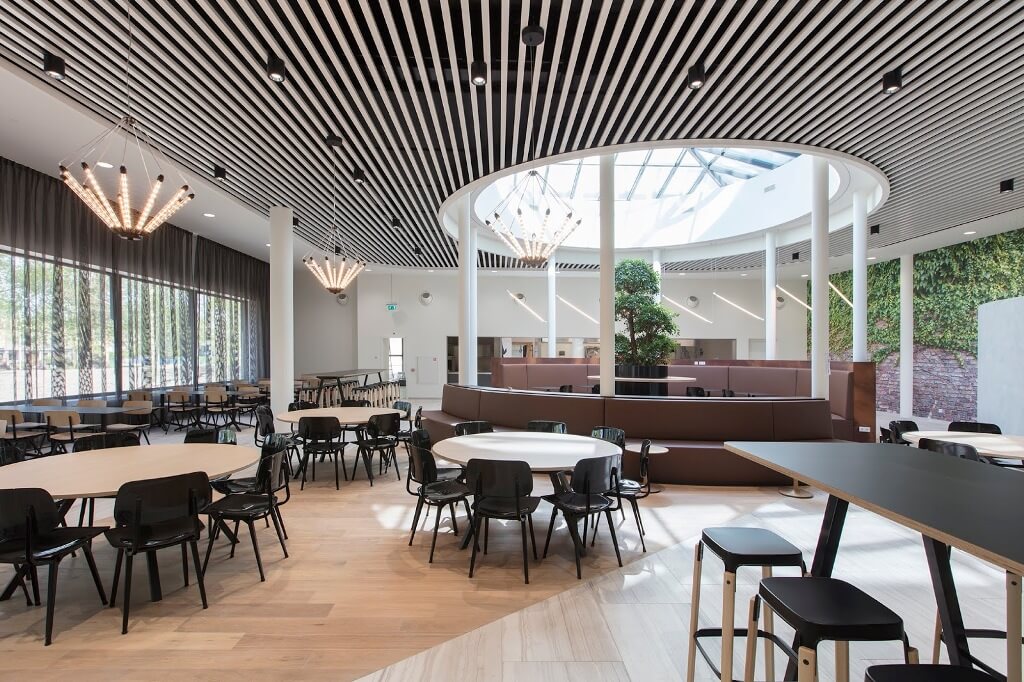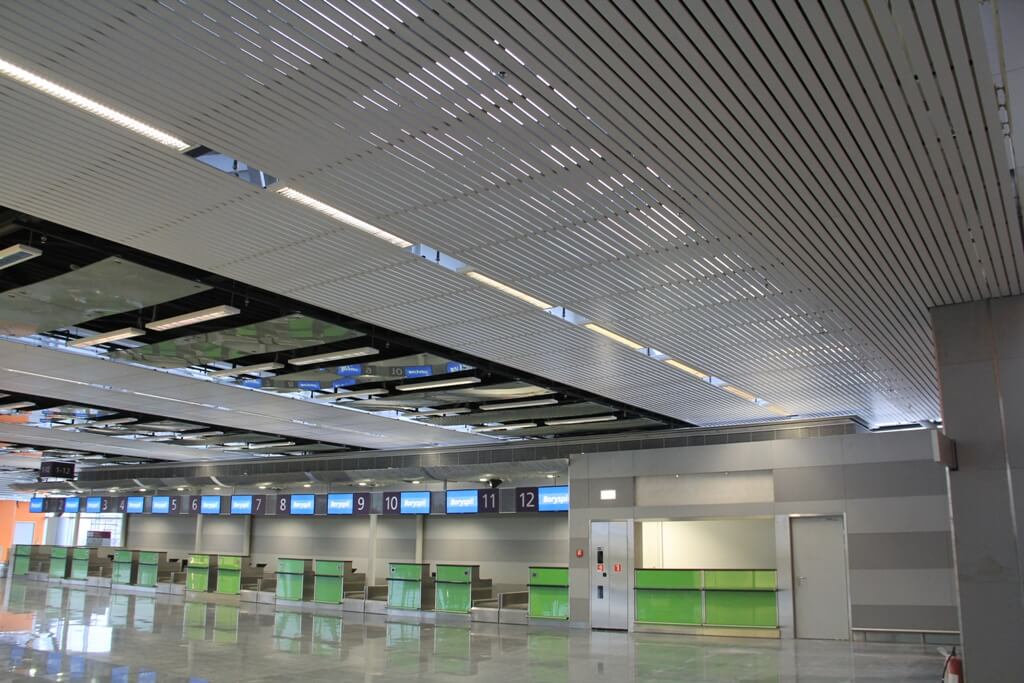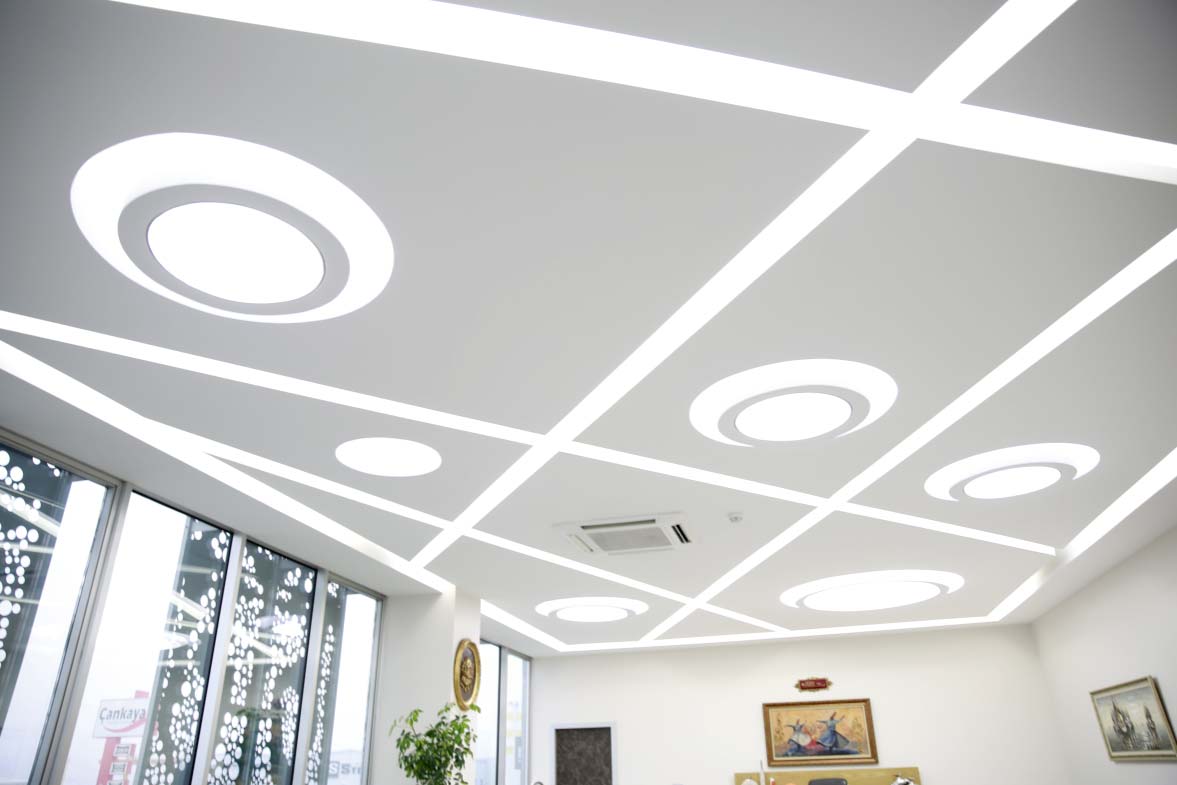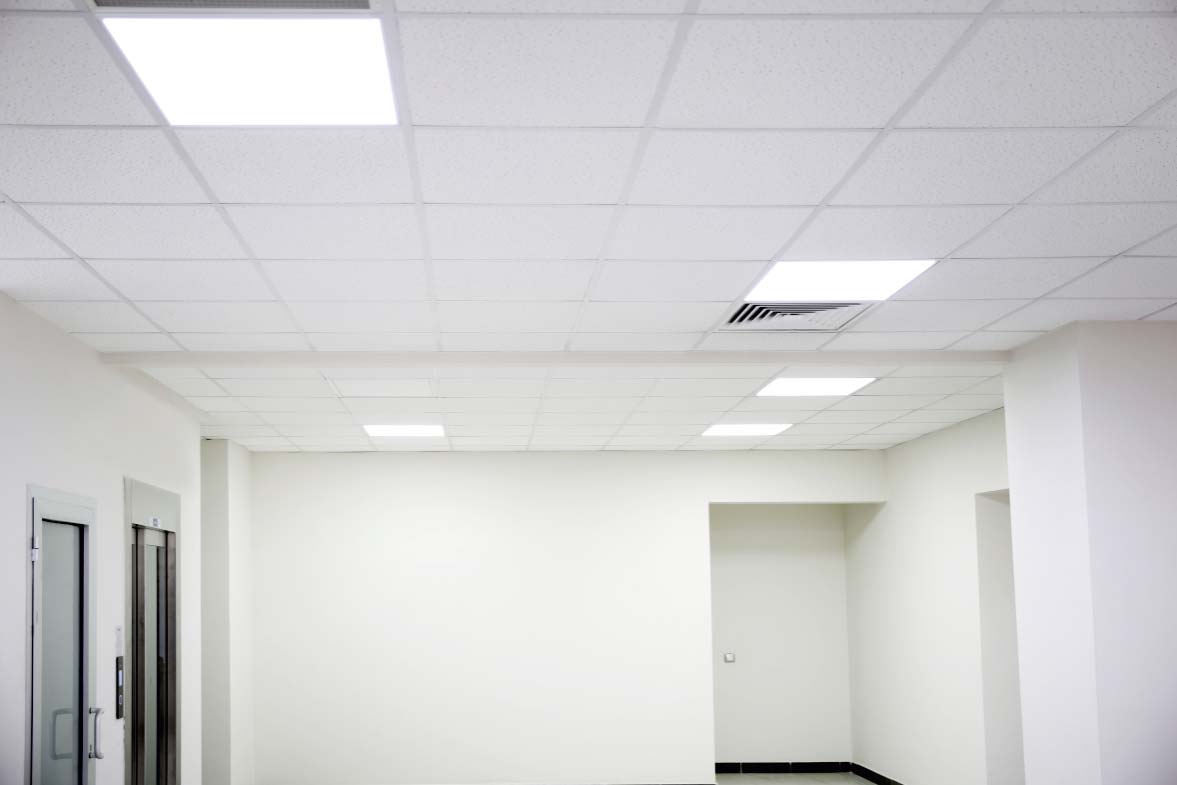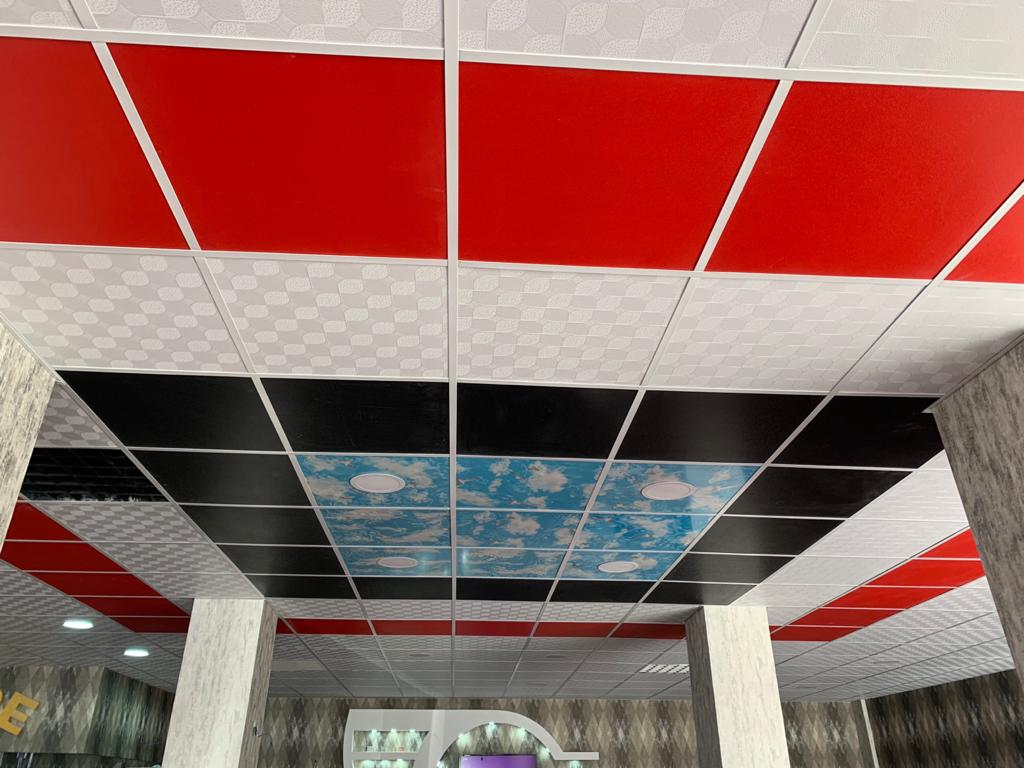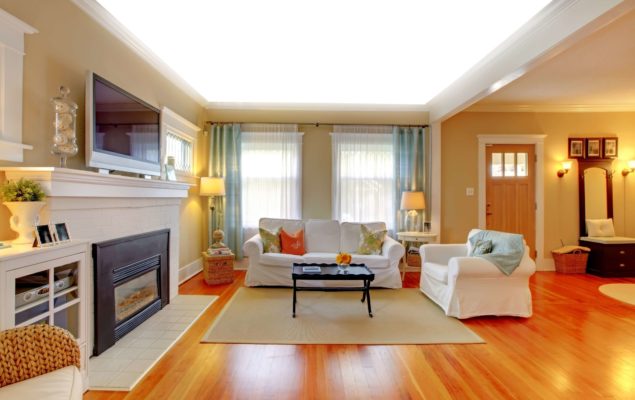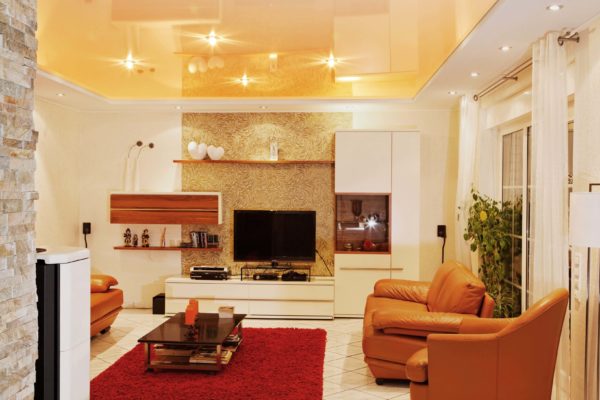Suspended Ceiling
You can easily reach everything you wonder about Suspended Ceilings with this content. Start exploring suspended ceiling systems now!
What is a Suspended Ceiling
A suspended ceiling, also known as a drop ceiling or false ceiling, is an innovative design solution used to conceal the structural elements of a building’s original ceiling while providing numerous functional and aesthetic benefits. This architectural feature consists of a secondary ceiling, typically made of lightweight materials, that is suspended from the primary or structural ceiling above, creating a void or space between the two layers.
- Structure and Installation: Suspended ceilings are designed with a grid-like framework, often made from metal or plastic, which supports the ceiling tiles or panels. The grid is secured to the walls or the existing ceiling, and the tiles are then inserted into the grid, creating a smooth and uniform surface below. The tiles can be easily removed and replaced, which simplifies maintenance and allows access to utilities and systems installed in the void between the suspended and primary ceilings, such as electrical wiring, plumbing, and HVAC (heating, ventilation, and air conditioning) ducts.
- Materials and Design: Various materials are used to create suspended ceilings, each offering unique properties and aesthetic options. Common materials for ceiling tiles include mineral fiber, fiberglass, metal, gypsum, and even wood. These materials come in different shapes, sizes, and finishes, allowing designers and homeowners to choose the best fit for their specific needs and desired aesthetics.
The design possibilities with suspended ceilings are vast. From simple, utilitarian designs in commercial settings to intricate patterns and textures in residential or hospitality spaces, suspended ceilings offer a canvas for creativity. They can be customized to complement the overall interior design, blend seamlessly with existing architectural elements, or add a striking contrast to the space.
Advantages of Suspended Ceilings:
Suspended ceiling grids offer a number of benefits, including:
- Aesthetics: Suspended ceilings can enhance the overall appearance of a room, hiding unsightly wires, pipes, and structural components that would otherwise be exposed in the primary ceiling. The variety of materials and design options available makes it easy to achieve a wide range of aesthetic effects.
- Acoustics: Suspended ceilings can significantly improve the acoustics of a space by reducing echo and noise levels. Acoustic ceiling tiles, designed with sound-absorbing properties, help create a more comfortable and peaceful environment in busy commercial areas or noisy indoor spaces.
- Thermal Insulation: Suspended ceilings can enhance energy efficiency by providing an extra layer of thermal insulation. This can help maintain a comfortable indoor temperature and reduce heating or cooling costs.
- Lighting Integration: Suspended ceilings offer the ideal platform for integrating lighting fixtures, including recessed lights, pendant lights, and track lights. This allows for versatile lighting solutions and the creation of specific atmospheres for different spaces.
- Easy Maintenance: Since the ceiling tiles can be easily removed and replaced, maintenance tasks, such as accessing wiring or fixing plumbing issues, become much simpler and cost-effective.
- Fire Safety: Many suspended ceiling materials have fire-resistant properties, providing an added layer of safety in buildings.
Suspended Ceiling Ideas
Suspended ceiling ideas, also known as false ceiling ideas, present a plethora of creative solutions to transform your rooms into captivating and functional spaces. Whether you seek to add a touch of elegance to your living room, create a serene ambiance in your bedroom, or boost productivity in your office, exploring the world of suspended ceilings opens up endless design possibilities. Let’s delve into some inspiring ideas and explore the rooms where they would look exceptionally good.
- Cove Lighting Magic: Enchanting Bedrooms
Enhance the tranquility of your bedroom with cove lighting, a suspended ceiling idea that exudes a soft and ethereal glow. Cove lights concealed within a false ceiling provide a gentle and indirect illumination, creating a soothing atmosphere perfect for relaxation and rejuvenation. The warm radiance elegantly outlines the room’s architectural features and accentuates any decorative elements, making it ideal for bedrooms where a calming ambiance is desired.
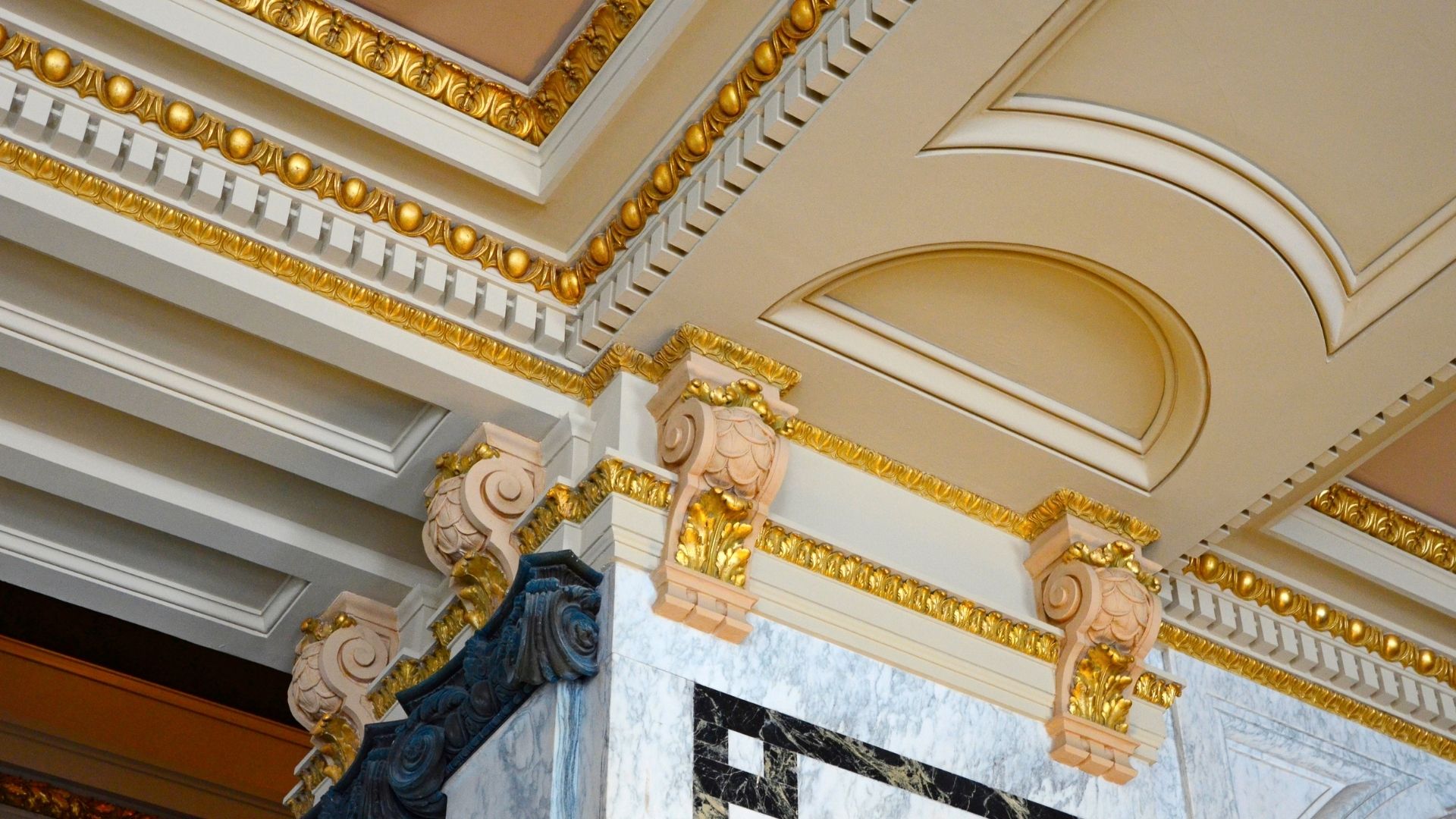
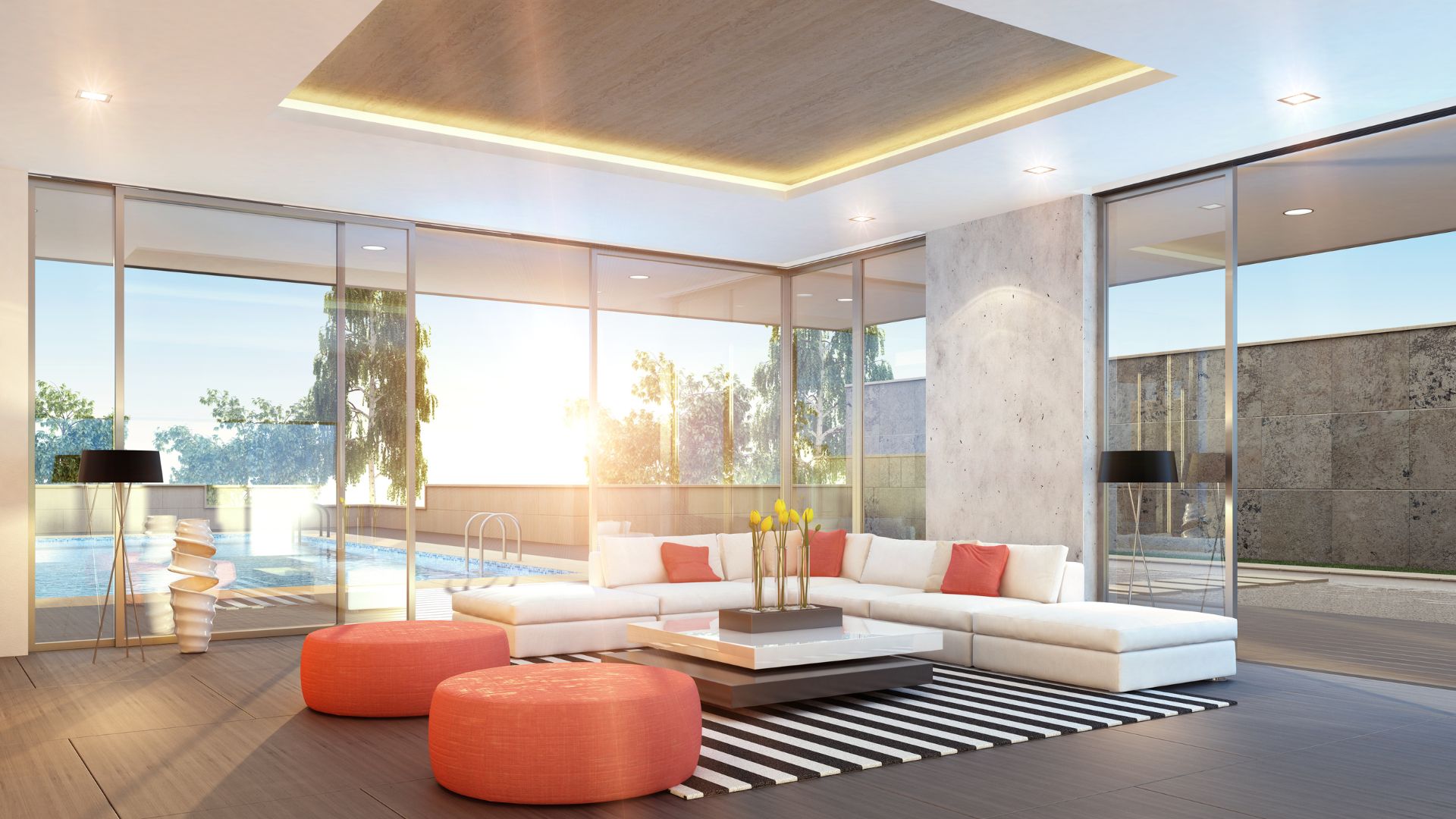
- Creative Geometric Patterns: Modern Living Rooms
For a contemporary and visually striking living room, consider experimenting with creative geometric patterns in your suspended ceiling design. By combining various ceiling tile shapes and arranging them in unique formations, you can add a touch of artistic flair to your living space. This false ceiling idea works particularly well in modern or minimalist interiors, becoming a focal point that complements your overall design theme.
- Skylights Illusion: Bright and Airy Home Offices
Transform your home office into a bright and airy workspace by incorporating skylights into your suspended ceiling design. While not a traditional false ceiling idea, skylights create an illusion of spaciousness and allow natural light to flood the room during the day. Combine these skylights with a suspended ceiling grid to integrate task lighting, such as track lights or pendant fixtures, for a well-lit and productive workspace.
- Wood Panel Elegance: Stylish Dining Areas
Add a touch of sophistication to your dining area with suspended wooden panels. False ceiling ideas that feature wood panels exude warmth and create an inviting atmosphere for family gatherings and dinner parties. This design concept works harmoniously with rustic, farmhouse, or Scandinavian interior styles, providing an earthy and organic ambiance that complements various dining room aesthetics.
- Pendant Light Drama: Artistic Entryways
Make a dramatic first impression with pendant lights incorporated into your false ceiling design in the entryway or foyer. Suspended ceiling ideas that feature pendant lights can create a captivating visual display, drawing attention to the entrance and setting the tone for the rest of your home. Choose bold and eye-catching pendant designs to leave a lasting impression on your guests.


- Mixed Materials Marvel: Versatile Commercial Spaces
For commercial spaces that require a mix of aesthetics and functionalities, consider combining different materials in your suspended ceiling design. False ceiling ideas that incorporate a mix of metal, wood, or even colored tiles can create visually interesting and versatile spaces. These mixed material suspended ceilings work exceptionally well in retail stores, offices, and multipurpose areas, allowing you to tailor the design to suit the specific needs of each room.
- LED Strip Extravaganza: Glamorous Entertainment Areas
Add a touch of glitz and glamour to your entertainment area with LED strip lights embedded within your suspended ceiling. False ceiling ideas that incorporate LED strips can create an enchanting and festive atmosphere, perfect for hosting parties or movie nights. The adjustable colors and brightness of LED strips offer dynamic lighting solutions, allowing you to customize the ambiance to match the mood of any gathering.
Suspended Ceiling Tiles
What are Suspended Ceiling Tiles?
Suspended ceiling tiles, also known as drop ceiling tiles, are panels that hang below an existing ceiling to create a new, lowered ceiling. They are often used to hide ductwork, wiring, and other unsightly elements, as well as to improve acoustics and thermal insulation.
- Materials and Styles: Suspended ceiling tiles are available in a variety of materials, including mineral fiber, fiberglass, PVC, and metal. Each material offers different benefits and drawbacks, so it is important to consider your specific needs when choosing a material.
- Installation : Suspended ceiling tiles are relatively easy to install, and can be installed by a professional or a skilled DIYer. The process involves attaching a grid system to the existing ceiling and then inserting the tiles into the grid.
- Maintenance: Suspended ceiling tiles are generally low-maintenance, and can be easily cleaned with a damp cloth or vacuum. However, if they become damaged or stained, they may need to be replaced.
Suspended Ceiling Grid
Suspended ceiling grids offer a number of benefits, including:
- Improved aesthetics: Suspended ceiling grids can improve the appearance of a room, hiding unsightly elements and adding a finished look.
- Easy access: Suspended ceiling grids provide easy access to the space above the ceiling, making it easy to install or maintain lighting, HVAC, and other systems.
- Improved acoustics: Suspended ceiling grids can help absorb sound and reduce noise levels in a room.
- Thermal insulation: Some suspended ceiling grids are designed to provide thermal insulation, helping to keep a room warm in the winter and cool in the summer.
In conclusion, suspended ceiling grids are an essential component of suspended ceiling systems, providing support for ceiling tiles and improving the appearance and functionality of a space. With many different materials and installation options available, they can be customized to fit your specific needs and preferences.
- Install the Ceiling Tiles: Once the suspension system is in place, the ceiling tiles can be installed. Begin by measuring and cutting the tiles to fit the grid pattern. Then, insert the tiles into the grid, making sure they are properly aligned and secured.
- Install Lighting Fixtures: If desired, lighting fixtures can be installed in the suspended ceiling. This involves cutting holes in the ceiling tiles to accommodate the fixtures, and wiring the fixtures to the electrical system.
- Finish the Installation: Finally, finish the installation by installing any necessary trim or molding around the perimeter of the ceiling, and cleaning up the work area.
In conclusion, installing a suspended ceiling requires careful planning and precise installation. By following these steps, you can achieve a professional-looking suspended ceiling that enhances the appearance and functionality of your space.
Suspended Ceiling Price
How Much is Suspended Ceiling?
Suspended ceilings are a system that is used to close the unsightly factors such as cables and pipes, such as installation in general.
- Suspended ceilings are the most preferred ceiling system due to their low cost compared to other ceilings.
- Generally, whether it is imported or domestic is a significant determinant in prices.
- You can buy the products of our company with great peace of mind when purchasing.
- Our prices vary according to the brand of the product.
- The market value of suspended ceiling prices is calculated per m².
- At the same time, price changes are made according to the shape of the area where the suspended ceiling will be made and inflation.
- We offer our products for sale by passing them through all aspects of control.
- The dimensions we provide, paint thicknesses, fabric properties, our packaging, the materials we use, glue and paint quality are preferred by considering our valued consumers.
Suspended Ceiling Models

EVERY CEILING
FAVORİ
It is easily accessible with more than 200 dealers in 42 different countries and 81 cities in Turkey.

42
In Different Country

81
In Our City

200+
With The Dealer
Usage Areas of Suspended Ceiling
Decorative suspended ceilings;
- It is used for residences and buildings.
- The use of shopping and entertainment centers is provided.
- It is used in health complexes and hospitals.
- It is used in schools and educational institutions.
- It is used in stores, shopping malls and shops.
- It is used in cafes and restaurants.
- It is used in gyms and sports fields.
- It is used in dining hall, conference halls and social facilities.
- It is used in offices, offices and industrial companies.
- It is used in cinema and theater halls.
- It is used in areas such as bathroom, toilet, living room and kitchen.
In short, it is used in every area where people can feel valuable. It is preferred in many different places because it has advantages such as being one-to-one for aesthetic appearance, ease of use, economic and ergonomic, advantage, easy assembly and disassembly features.
Episode 7
The Most Wondered About Suspended Ceiling
The terms “dropped ceiling” and “suspended ceiling” are often used interchangeably, but there is a subtle difference between the two. A dropped ceiling refers specifically to a ceiling that is lower than the original ceiling, while a suspended ceiling refers to a ceiling that is hung from the original ceiling.
A dropped ceiling is typically created by installing a new ceiling directly below the existing one. This can be done using a variety of materials, including drywall, wood paneling, or ceiling tiles. The new ceiling is attached to the existing ceiling using furring strips or other supports, creating a gap between the two.
A suspended ceiling, on the other hand, is created by hanging a grid system of metal channels from the existing ceiling, and then inserting ceiling tiles into the grid. The grid is suspended from the ceiling using wires or other supports, creating a gap between the two.
The main advantage of a suspended ceiling over a dropped ceiling is that it allows for easy access to the space above the ceiling. This makes it easier to install or maintain lighting, HVAC, and other systems. Suspended ceilings also offer a wider range of design options, as they can be customized with different types of ceiling tiles and grid materials.
In summary, while the terms “dropped ceiling” and “suspended ceiling” are often used interchangeably, a dropped ceiling specifically refers to a ceiling that is lower than the original ceiling, while a suspended ceiling is hung from the original ceiling using a grid system of metal channels.
There are three main types of suspended ceilings, each with their own unique characteristics and benefits. These types are:
-
Exposed grid suspended ceilings: This type of suspended ceiling features a visible grid system made up of metal channels that are suspended from the ceiling. The ceiling tiles are inserted into the grid system, creating a new, lowered ceiling. Exposed grid suspended ceilings are the most common type of suspended ceiling and are often used in commercial and industrial buildings.
-
Concealed grid suspended ceilings: This type of suspended ceiling features a grid system that is hidden behind the ceiling tiles. The tiles are installed in a way that hides the grid system, creating a seamless and streamlined appearance. Concealed grid suspended ceilings are often used in high-end residential and commercial spaces where aesthetics are a top priority.
-
Linear metal ceilings: This type of suspended ceiling features long, narrow metal tiles that are installed in a linear pattern. The tiles are suspended from a grid system using special clips or other supports. Linear metal ceilings offer a modern and sleek look and are often used in commercial and industrial buildings, as well as in modern residential spaces.
Each type of suspended ceiling offers different benefits and can be customized to fit a wide range of design and functional needs. The choice of suspended ceiling type will depend on factors such as the desired appearance, the function of the space, and the budget.
If you have a suspended ceiling and one or more of the ceiling tiles become damaged, it may be necessary to replace them. Fortunately, replacing suspended ceiling tiles is a relatively simple process that can be done by a professional or a skilled DIYer.
Here are the steps to replace suspended ceiling tiles:
-
Remove the damaged tile: Carefully remove the damaged ceiling tile from the grid system. This can usually be done by tilting the tile and lifting it out of the grid.
-
Measure the replacement tile: Measure the dimensions of the empty grid space where the damaged tile was located. Make sure to measure the length, width, and thickness of the space to ensure that the replacement tile will fit properly.
-
Choose the replacement tile: Choose a replacement tile that matches the size and style of the existing ceiling tiles. If the original tile is no longer available, choose a tile that is as close as possible in size and appearance.
-
Install the replacement tile: Insert the replacement tile into the empty grid space, making sure that it is properly aligned and secured. Gently press the tile into place, making sure that it is flush with the surrounding tiles.
-
Check for fit: Double-check that the replacement tile fits properly and is securely in place. If the tile is not flush with the surrounding tiles or if it is loose, adjust it until it fits properly.
Replacing a suspended ceiling tile is a simple process that can be done quickly and easily. By following these steps, you can restore the appearance and functionality of your suspended ceiling without the need for expensive repairs or replacements.
Why Is Suspended Ceiling Used?
What are the Advantages of Suspended Ceilings?
How to Calculate Suspended Ceiling?
Is Suspended Ceiling Used in the Bathroom?
Does Suspended Ceiling Provide Thermal Insulation?
Does Suspended Ceiling Provide Sound Insulation?
Suspended Ceiling Lighting
A suspended ceiling tile, also known as a drop ceiling tile, is a type of ceiling panel that is hung from a suspended ceiling grid system. The tile is typically made from a variety of materials, including mineral fiber, fiberglass, PVC, or metal, and is designed to fit into the grid system in a standard size and shape.
Suspended ceiling tiles are used to create a new, lowered ceiling that can help improve the appearance and functionality of a space. They are often used in commercial and residential buildings to cover up unsightly elements such as ductwork or wiring, as well as to improve acoustics and thermal insulation.
There are many different types of suspended ceiling tiles available, each with its own unique properties and benefits. Some tiles are designed to provide additional sound absorption, while others are designed to be fire-resistant or to provide additional thermal insulation. Suspended ceiling tiles can also be customized with a variety of finishes, including decorative patterns or textured surfaces.
Installing suspended ceiling tiles is a relatively simple process that can be done by a professional or a skilled DIYer. The tiles are simply inserted into the grid system, ensuring that they are properly aligned and secured. If a tile becomes damaged or stained, it can be easily replaced by removing it from the grid and inserting a new tile in its place.
In conclusion, suspended ceiling tiles are a versatile and cost-effective way to improve the appearance and functionality of a space. With many different materials, finishes, and design options available, they can be customized to fit a wide range of needs and preferences.
Suspended ceiling tiles, also known as drop ceiling tiles, are available in a wide range of colors and finishes. Colored ceiling tiles can add a pop of color to a room and help create a unique and personalized look. Here are some popular options for colored suspended ceiling tiles:
-
White Suspended Ceiling: White is the most common color for suspended ceiling tiles. It provides a clean and neutral look that can work well in a variety of settings, from offices to homes.
-
Black Suspended Ceiling: Black ceiling tiles can create a dramatic and modern look, especially when paired with other black or dark-colored elements in the room.
-
Gray Suspended Ceiling: Gray ceiling tiles provide a sleek and sophisticated look that works well in contemporary and industrial-style spaces.
-
Beige Suspended Ceiling: Beige ceiling tiles offer a warm and inviting look that can create a cozy atmosphere in a room.
-
Blue Suspended Ceiling: Blue ceiling tiles can add a pop of color to a room and create a calming and soothing atmosphere.
-
Green Suspended Ceiling: Green ceiling tiles can add a natural and earthy touch to a room, especially when paired with natural materials like wood or stone.
-
Red Suspended Ceiling: Red ceiling tiles can create a bold and energetic look, making them a popular choice for commercial or retail spaces.
In addition to solid colors, suspended ceiling tiles are also available in a variety of patterns and textures, including woodgrain, metallic, and embossed designs. By choosing a color and finish that complements the style of the room, suspended ceiling tiles can help enhance the appearance and functionality of a space.
Suspended ceiling tiles, also known as drop ceiling tiles, can be made from a variety of materials, each with its own unique characteristics and benefits. Some of the most common materials used for suspended ceiling tiles include:
-
Mineral fiber: This is the most common material used for suspended ceiling tiles. Mineral fiber tiles are made from a combination of mineral wool and binders, and are designed to be lightweight, durable, and easy to install. They are also highly effective at absorbing sound and reducing noise levels in a room.
-
Fiberglass: Fiberglass ceiling tiles are made from thin, lightweight fiberglass fibers that are mixed with a resin binder. They are highly resistant to moisture and can be designed to provide additional thermal insulation.
-
PVC: PVC ceiling tiles are made from a type of plastic called polyvinyl chloride. They are highly resistant to moisture and are often used in areas where humidity is a concern, such as bathrooms or kitchens.
-
Metal: Metal ceiling tiles are made from a variety of metals, including aluminum and steel. They are highly durable and are often used in commercial or industrial spaces where a high level of durability is required.
-
Wood: Wood ceiling tiles are made from a variety of woods, including cedar, pine, and oak. They are often used in residential or commercial spaces where a natural, rustic look is desired.
Each type of suspended ceiling tile has its own unique properties and benefits, and the choice of material will depend on factors such as the function of the space, the desired appearance, and the budget.
What are the Factors Affecting the Price of Suspended Ceilings?
Is a suspended ceiling used in the kitchen?
What are Suspended Ceiling Models?
Does Suspended Ceiling Provide Acoustics?
What is Modular Suspended Ceiling?
How to Clean a Suspended Ceiling?
Suspended Ceiling Examples
- Stretch Ceiling
- Karopan Ceiling
- Acoustic Suspended Ceiling
- Metal Suspended Ceiling
- Honeycomb Ceiling
- Mesh Ceiling
- Baffle Ceiling
- Linear Suspended Ceiling
- Vector Suspended Ceiling
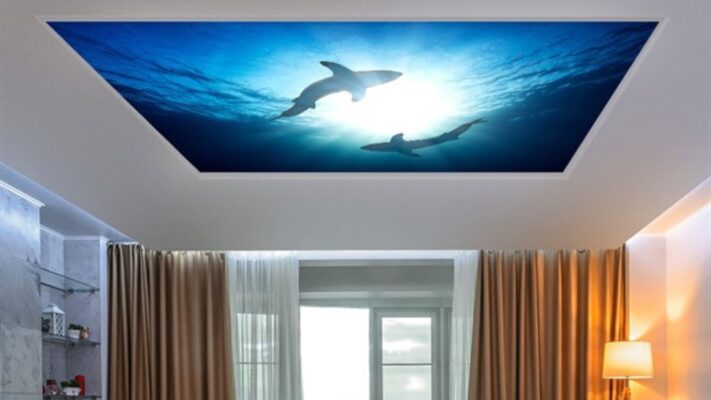
Stretch Ceiling

Living Room Suspended Ceiling

Suspended Ceiling Blog
COMMENTS
What are our customers saying?
Listen to Favori from our customers.
We attended a perfectly prepared launch alongside quality products. On behalf of the hospitality, we congratulate the Favori family.
E. Serdar Duman
Favori Yapı I have used ceiling systems in many corporate and individual projects and I recommend them to everyone.
Kemal Dinçer


 Русский
Русский العربية
العربية Français
Français Türkçe
Türkçe Română
Română Português
Português ქართული
ქართული български
български Magyar
Magyar
















